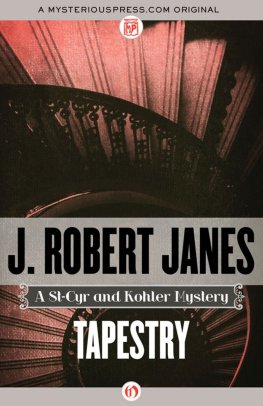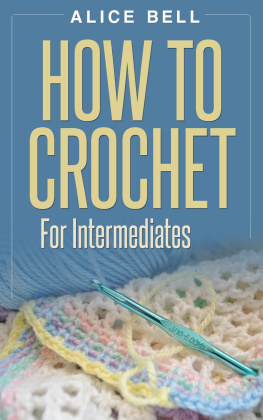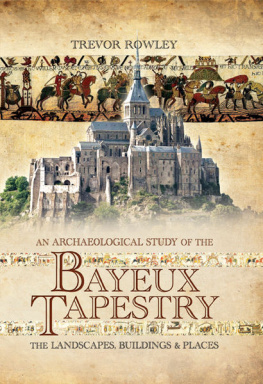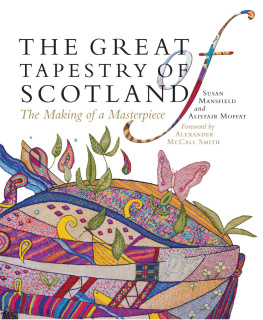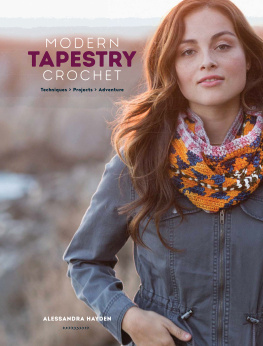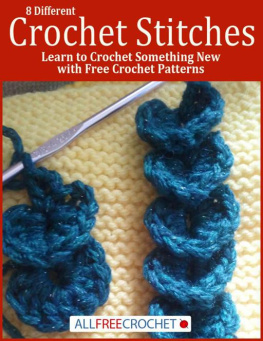MORE TAPESTRY CROCHET
DIGITAL
by Carol Ventura
ISBN 978-0-9721253-3-8
Copyright 2014 by Carol Ventura
All rights reserved
First edition printed in 2002
Second edition (revised and digitized) in 2014
web page: http://www.tapestrycrochet.com
blog: http://www.tapestrycrochet.com/blog
email:
This book is dedicated to all of my students; you have taught me so much!
CONTENTS
Chapter One:
Chapter Two:
Chapter Three:
Chapter Four:
Chapter Five:
Chapter Six:
Chapter Seven:
Chapter Eight:
Chapter Nine:

ACKNOWLEDGEMENTS
I am grateful to the collaborative spirit that I encountered from the beginning of this project to its fruition. Several generous thread, yarn , bead, and framing companies supplied the materials for the projects.
The following people helped me with the content of the book: Mary Cahill, Nancy Nehring, and Marian Nelson of California; Elaine Brown of Connecticut; Kate Coburn of Arizona; David Carrell and Corinne Lilie of Georgia; Ann Harding and Les Harding of Indiana; Cathy Stewart of North Carolina; Therese Honey of Texas; Crystal Smith and Roxane Whisnant of Tennessee, Abdou Mfopa of Cameroon, Anne-Marie Moroney of Ireland; and Aviva Peres of Israel.
When I decided to venture into the publishing world, Dean Carothers, Kim Nash, Lauren Neal, Lana Rossi, Elaine Wells, Mike Wheeler, and Chris Wilson of Tennessee, introduced me to the proper hardware and software for laying out the book and provided me with much appreciated technical support. Nancy Spies of Maryland shared invaluable information about the ins and outs of publishing and selling books.
My family was also instrumental in putting this book into your hands. My father, Vincent Woychowski, bought the computer and software I needed. My husband, Andrzej Gutek, helped me with the editing, and my daughter, Ilsy, modeled the shawl project.
Without these incredible people, this book would still be just a dream!

Detail of a tapestry crocheted cotton shoulder bag from Guatemala, 1977.
A few words before you begin:
This book can be used alone or with my first book, Tapestry Crochet , published under my previous name, Carol Norton, and my third book, Bead & Felted Tapestry Crochet . This book includes additional graphs and project formats, different motifs (including letter forms), and a variety of natural fibers. All of the illustrations, photographs, and crocheted pieces in this book are from my personal collection. Unfortunately, most of the threads and yarns used in the projects are no longer available, but there are many similar fibers on the market that may be substituted.
I hope you will spread the word about tapestry crochet and that each of you will teach at least one friend how to do tapestry crochet. The instructions to each project are wordy, because I have found that many crocheters have a difficult time following abbreviated instructions. Since some people prefer to crochet the motif by following a chart and others prefer to read instructions, I have included both.
Attention teachers! Tapestry crochet is relatively easy and inexpensive the perfect vehicle for introducing fiber art to your students. It takes more time than money to create beautiful, original pieces. Colorful patterns and intricate or simple motifs can be worked out with the special graphs in this book. Students can then incorporate their own designs into a variety of projects. They will learn about design, color, and fiber art! I hope you will use my free Felted Amulet Bag , Amulet Bag , Basket , Beaded Heart Basket , Handspun Hats , Kitty Bag , Wallet , Horse Around Purse , Felted Bag , and Bead Duck Basket patterns from my web page for teaching your own tapestry crochet classes. These projects include links to free tutorials that you may also use with your students.
If you love crochet, and would like to learn more about it or share your enthusiasm, consider becoming a member of the Crochet Guild of America . The CGOA annual conferences, crochet library, and web page are outstanding!
I hope that some of you brave and creative crocheters will design and publish your own projects, too. I have taken a very conservative approach to tapestry crochet. If I do another tapestry crochet book, it will include a variety of crochet stitches and textured yarns. I dare you to beat me to it!
What is Tapestry Crochet?

Tapestry crochet is not found everywhere, although it is becoming more widespread as people move around the world. This type of crochet differs from ordinary crochet in its texture, tension, and how colors are manipulated. Two or more yarns are worked at the same time to create intricate or simple motifs. Depending on the tension and number of yarns carried, the finished fabric can be stiff or supple, and may take any flat or three-dimensional form. Tapestry crochet has the flexibility and portability of crochet, but the finished pieces do not look crocheted. In fact, they look so much like tapestry weaving, that most people think that tapestry crocheted pieces are made on a loom!
THE HISTORY OF TAPESTRY CROCHET
EUROPE and the MIDDLE EAST
A type of tapestry crochet (pictured below) called Bndnerhkelei or Mosaikhkelei (Mosaic Crochet) has been done in Switzerland for several hundred years. With Mosaikhkelei, the crochet hook is inserted into only the back loop of the stitch, leaving a horizontal line on the face of the piece. Mosaikhkelei is always worked from right to left, and the yarns are cut at the end of each row. Sometimes the other thread is carried, while other times it is left to run along the back of the stitch.

Anne-Marie Moroney crocheted this 8 x 1 Swiss Bndnerhkelei with orange and blue cotton thread in 1997. The face is pictured above and the reverse is below. The thread has been carried. The last stitch is worked alternately in one row as a single crochet and in the next row as a slip stitch to keep the crochet work the same height at the beginning and the end of each row. An additional chain stitch is worked in each row so that the last stitch doesnt come out. Both yarns are cut, then the worked yarn is cut and pulled through the chain stitch (Wolf-Bearth, p. 58).

From the thirteenth through the nineteenth centuries, the Swiss called crochet Nuns Work . At that time it was used to border altar cloths and house linens. At the end of the nineteenth and the beginning of the twentieth centuries, Mosaikhkelei was added to tablecloths, pillows, and even lingerie. Later, mosaic crochet motifs were used to decorate pillows and the borders of woven cloths (see above). Many of the motifs were copied from cross-stitch and filet crochet pattern books. To create a strong contrast, white and red cotton were often used together. Blue and brown were less common (Wolf-Bearth 1996:55).


